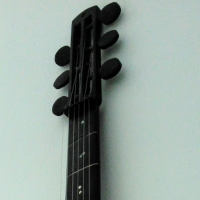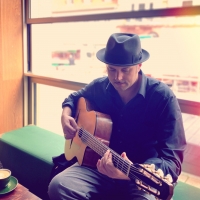DjangoBooks.com
Welcome to our Community!
Categories
- 20K All Categories
- 1.1K General
- 477 Welcome
- 59 Archtop Eddy's Corner
- 146 CD, DVD, and Concert Reviews
- 385 FAQ
- 26 Gypsy Jazz Italia
- 27 Photos
- 202 Gypsy Picking
- 21 Unaccompanied Django
- 15 Pearl Django Play-Along Vol.1
- 17 Gypsy Fire
- 45 Gypsy Rhythm
- 1.4K Gypsy Jazz University - Get Educated
- 131 Gypsy Jazz 101
- 227 Repertoire
- 219 History
- 708 Technique
- 51 Licks and Patterns
- 6 Daniel Givone Manouche Guitare Method Users Group
- 20 Eddie Lang Club
- 1.3K Gypsy Jazz Gear
- 802 Guitars, Strings, Picks, Amps, Pickups and Other Accessories
- 460 Classifieds
- 49 Recording
- 62 Other Instruments
- 18 Violin
- 5 Mandolin
- 22 Accordion
- 7 Bass
- 10 Woodwinds
- 348 Gypsy Jazz Events
- 143 North America
- 110 Europe
- 95 International
In this Discussion
Who's Online (0)
Gibson L4 16 inches from 39-40 in action
hey guys, here is a little test of a 39-40 Gibson L4 that i helped a friend sell a few weeks ago, a good alternative (and cheaper) to own a 16 inches than L5 pre 1935
don't hesitate to subscribe to the acoustic standards Chanel if you like. I'll try to post 2 AS a month. Don't hesitate to drop a line if you are selling a pre 1950 acoustic archtop etc. I could also trade with my Dupont Vieille Reserve #006 if i still have it by then.
Best
Romain













Comments
I had often read that the late 30's-early 40's L4 was structurally and tone wise the same as the early 16" L5's. This prompted me to buy one, many years ago. Compared to my 1937 17" L5 it is much more of a trebly lead instrument where as the L5 is a much fuller, more wide range sound. I only wish I could do them justice as in your playing. I think of my L4 as a telecaster, when I put an old Dearmond monkey on a stick on it, it is a screaming 40's blues machine. Cant go wrong with either though.
I still can’t properly distinguish the “f” hole ‘34 (early ‘34 with 16” lower bout) L-4 and the same year L-7. Between the Gruhn book, the Gibson catalog and the internal label, it’s confusing. The “Nick Lucas” position markers, and the headstock design seem to be the biggest clues.
My Label says “L-4”, but it appears to have the Gruhn and Nick Lucas marks of an L-7.
Any guidance?
It seams that the diffrence would be the headstock maybe? i have a 34 L7 with a different headstock as the L4 that i'm playing here, although they share the same nick lucas style inlays. Also my L7 has an ebony fingerboard and the L4 here has a rosewood one i think
thanks for your comment. It's true that even if L5s and L7s are structurally the same, you can still hear a tone difference between them, the L5s tending to be fuller, deeper and richer. That's what happens between my L7 and L5 both 16 inches from 34, the L5 is way deeper ! I'll try to post a comparative test between the 2, maybe sure to subscribe.
Meanwhile, this is the 34 L5 in action on Eddie Lang's Rachmaninov prelude ! https://www.youtube.com/watch?v=Kp2H-Vz9t9Q
The label says “L-4” and it is a rosewood fingerboard, but both the catalog and Gruhn’s book don’t state that the Lucas inlays were on the L-4.
maybe I should talk to George Gruhn himself, or take a trip to Nashville.
Top two photos from the Gruhn book, bottom 2 from the early 1934 Gibson catalog.
I could be wrong but my understanding is that it is a matter of year. The 16 inch guitar you describe was the L-7 until 1935 when the 17 inch guitars were introduced, including the 17 inch L-7. Rather than abandon the 16 inch f-hole L-7, that guitar was renamed as the L-4 in 1935. There were a few detail variations made as Gibson often did. For example, I had a ‘35 L-4 with an ebony fingerboard although the catalogs said they were rosewood. Nice guitars!
Hi Romain,
What is the height of the sides on the L5 and the L7?
Thanks
Michael had one for sale at one time, and the dimensions are included in the description:
https://www.djangobooks.com/Item/1934-gibson-l5-2
I'm willing to be corrected on this, but my impression has been that, at least from the "advanced" build formula breakpoint, the L-5/L-7 (and L-10 and L-12) differences were primarily cosmetic, and (though perhaps fingerboard material might have a sonic effect), not unlike the Epiphone Deluxe/Broadway/Triumph differences in the same period.
Another impression (based on my subjective reaction to not-very-systematic playing of a range of '30s-50's examples) is that there's no particular pattern to the voices of the models--some growl, some chunk, some are brassy, some are thin-sounding, and so on. If anything, I've preferred the voices of the L-7s, but that's the kind of thing that's sensitive to a small sample. (And I generally prefer Epiphones anyway--I sold off my pretty-good '45 L-7 and have kept my '46 Broadway. Go figure.)